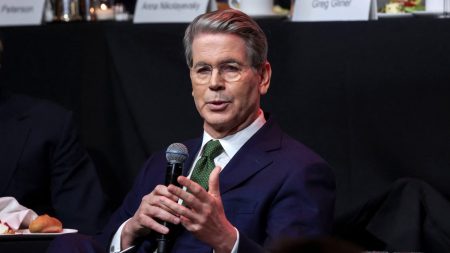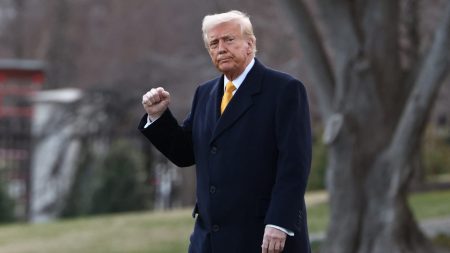Defense Stocks Plunge After Trump Suggests Drastic Cuts in Military Spending
On Thursday, February 13, 2025, U.S. President Donald Trump made headlines when he suggested that the United States could potentially cut its defense spending in half in the future. This statement, made during a White House press conference, sent shockwaves through the defense industry, causing defense stocks to drop sharply. Lockheed Martin, Northrop Grumman, and General Dynamics all saw significant declines, with shares falling by 1.6%, 3.4%, and 2.1%, respectively. This sudden plunge reflects the immediate impact of Trump’s remarks on investor confidence in the defense sector.
The president’s comments were part of a broader discussion about his vision for reducing military spending and reallocating resources to other priorities. Trump expressed his desire to hold a future conference with China and Russia, where he would propose a collective reduction in military budgets. "At some point, when things settle down, I’m going to meet with China and I’m going to meet with Russia, in particular those two, and I’m going to say there’s no reason for us to be spending almost $1 trillion on the military… and I’m going to say we can spend this on other things," Trump said. He further emphasized that cutting defense spending in half was a goal he believed could be achieved, suggesting that such a move would allow the U.S. to redirect funds toward domestic initiatives.
However, Trump’s stance on military spending has been inconsistent throughout his 2024 campaign and the early days of his presidency. While he has championed the idea of reducing costs and streamlining government operations—even enlisting the help of Elon Musk and a new task force called the "Department of Government Efficiency"—he has also repeatedly emphasized the importance of maintaining a strong military. For instance, Trump recently signed an executive order to explore the development of an "Iron Dome of America," a missile defense system designed to enhance U.S. security. Additionally, the president has often boasted about the superiority of American military equipment, calling it the "greatest in the world." This dichotomy in Trump’s messaging has left many analysts and observers perplexed.
The Mixed Signals on Military Spending
Trump’s dual approach to defense spending—advocating for both cost-cutting measures and the modernization of the military—has created confusion among policymakers and investors. On one hand, the president has pushed for a swift resolution to the war in Ukraine, which has relied heavily on U.S. weapons shipments to support Kyiv. This has inadvertently bolstered demand for American defense products, particularly from European allies. On the other hand, Trump’s calls for massive spending reductions have raised questions about the long-term sustainability of the U.S. defense industry.
Roman Schweizer, a policy analyst at TD Cowen, summed up the uncertainty earlier this week when he told CNBC, "Right now, people are confused by a number of different crosscurrents" on defense spending. This confusion is evident in the stock market’s immediate reaction to Trump’s remarks. Despite the president’s recent efforts to promote American military strength, the mere suggestion of cutting defense spending was enough to rattle investors. This reaction underscores the delicate balance Trump is trying to strike between fiscal conservatism and national security priorities.
The Potential Implications of Drastic Defense Cuts
If Trump’s proposed cuts were to materialize, the implications for the U.S. defense industry—and the global geopolitical landscape—would be profound. A reduction of this magnitude could lead to widespread job losses, Facility shutdowns, and a slowdown in the development of advanced military technologies. Additionally, such a move could embolden U.S. adversaries, particularly China and Russia, who might interpret the cuts as a sign of U.S. weakness or retreat.
At the same time, proponents of reduced military spending argue that such a shift could allow the U.S. to focus on pressing domestic issues, such as infrastructure, education, and healthcare. Trump himself has framed the idea as a way to redirect resources toward "other things" that benefit the American people. However, the practical challenges of achieving such a reduction without compromising national security are immense. The U.S. military is engaged in operations around the world, and its budget reflects the cost of maintaining a global presence.
The Broader Context of Trump’s Defense Policy
Trump’s comments on defense spending must be viewed within the context of his broader foreign policy agenda. The president has long advocated for a more isolationist approach, prioritizing American interests above international alliances and interventions. His push for a quick resolution to the war in Ukraine, for example, reflects his desire to minimize U.S. involvement in prolonged conflicts. Similarly, his proposed conference with China and Russia suggests an interest in negotiating arms control agreements that could reduce global tensions—and, by extension, the need for massive military budgets.
Yet, Trump’s rhetoric about military strength has often clashed with his actions. While he has criticized past administrations for overspending on defense, he has also taken credit for modernizing the U.S. military and increasing its lethality. This contradiction leaves many wondering whether Trump’s vision for defense spending is driven by a genuine desire for fiscal responsibility or by a political strategy to appeal to voters who are wary of endless wars and bloated government budgets.
The Market’s Reaction and Analyst Insights
The immediate drop in defense stocks following Trump’s comments highlights the sensitivity of the market to changes in government policy. Lockheed Martin, Northrop Grumman, and General Dynamics—all major defense contractors—saw their shares decline as investors weighed the potential risks of reduced military spending. This reaction is not surprising, given the historical reliance of these companies on U.S. government contracts.
Analysts like Roman Schweizer have pointed out that the confusion surrounding Trump’s defense policy is exacerbating market volatility. While the president’s cost-cutting initiatives have been clear, his simultaneous emphasis on maintaining a strong military has left investors and policymakers unsure of what to expect. This uncertainty is likely to persist as Trump continues to navigate the complex interplay between fiscal conservatism and national security.
Conclusion: ADelicate Balance for Trump’s Defense Policy
President Trump’s suggestion of cutting defense spending in half has sparked both intrigue and alarm, reflecting the broader tensions in his approach to military policy. While the idea of reallocating resources to domestic priorities resonates with many Americans, the practical and geopolitical implications of such a drastic reduction are significant. The U.S. defense industry, which employs millions of workers and drives technological innovation, would likely face severe disruptions. At the same time, Trump’s push for a strong military and his recent initiatives to modernize defense systems suggest that he is not entirely abandoning the traditional Republican stance on national security.
As the president moves forward with his vision for defense spending, he will need to navigate this delicate balance carefully. The success of his policy will depend on his ability to reassure allies, deter adversaries, and maintain investor confidence—all while delivering on his promise to reduce costs and focus on American priorities. For now, the confusion and uncertainty surrounding Trump’s defense policy will likely continue to dominate the conversation in Washington and on Wall Street.









